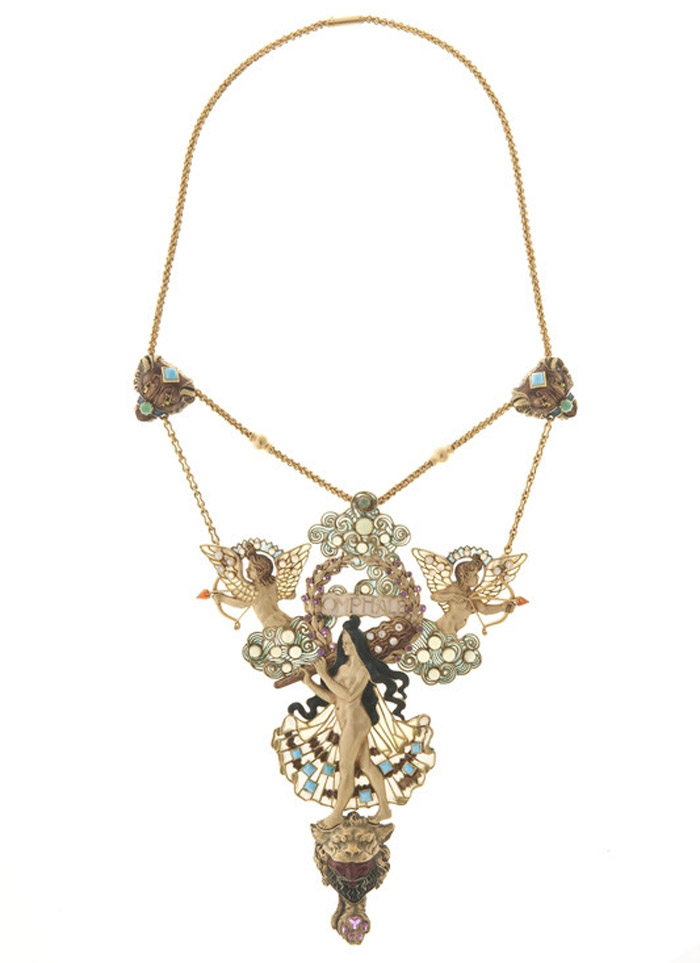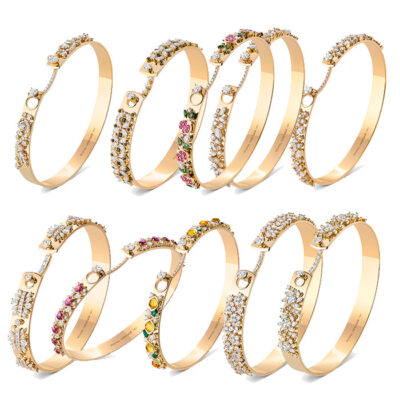Style
16 April 2018
Share
Henri Vever, the Art nouveau jeweler
Though the name of Henri Vever was eclipsed by René Lalique’s, this Paris jeweler played a key role in Art nouveau.
The Vever company, which finally closed in 1982, was at its peak at the turn of the 20thcentury. Coming from a line of jewelers based in Metz, the brothers Paul and Henri Vever set up in Rue de la Paix, garnering prizes at all the major exhibitions of the time, in Moscow, Brussels, Chicago and the Paris Universal Exhibition of 1900. Their prestigious international customers included the Shah of Persia, Alexander III, Sadi Carnot and leading American entrepreneurs of the Gilded Age.
Henri Vever the jeweler
The Musée des Arts Décoratifs contains around a hundred pieces by the Vever company, donated in 1924 by the man himself at the same time as his remarkable collection of 250 French jewelry items, covering the period from the Revolution to 1900. As a craftsman, he contributed to the emergence of modern jewelry, excelled in the art of enameling, and used horn, ivory and opals, though less boldly than René Lalique (who worked for him until 1898). He had what “some would call a decided preference for precious stones” (Evelyne Possémé curator at the Musée des Arts Décoratifs and of the gallery des Bijoux in the book “Maîtres Joailliers”). He was also inspired by nature, but would never feature any alarming creatures or withered elements. Unlike René Lalique, he remained highly conventional, and was always attentive to the wearable aspect of jewelry.
Henri Vever the collector
The jeweler was perhaps also obscured by other facets of his personality. Curious and passionate, he was truly fascinated by his times. He was a recognized art lover and a first-rate collector, seeking out not only jewelry but also antique pieces, including Persian and Moghul miniatures and rare books. In the 1880s, he began to buy Impressionist works by Monet, Sisley and others, some of which are now in the Musée d’Orsay and Washington’s National Gallery. At the same time, he was keenly interested in Japanese prints from the Edo period, particularly those of Hokusai and Hiroshige, which he tracked down through dealers like Hayashi and Siegfried Bing. Some of these ended up in the Yves Saint Laurent/Pierre Bergé collection.
Henri Vever the chronicler and historian
Writing was another of his talents. He wrote a great deal (sometimes under the pseudonym Maud Ernstyl), including personal reports, prefaces, catalogues and his masterpiece, “La Bijouterie française au XIXe siècle”: a three-volume chronological account that has become a reference. In it, he describes the development of jewelry from 1800 to 1900 as shaped by social and economic change, together with life in workshops and new jewelry techniques and applications. He recreates the atmosphere of exhibitions and comments on the work of rivals like Fouquet, Falize, Froment-Meurice, Chaumet and Boucheron. It is invaluable as an account of both jewelry and his times, because Vever the socialite lards his text with sparkling and often witty personal anecdotes that truly bring those years to life.
Evelyne Possémé believes that “Henri Vever’s name would certainly have been forgotten had he not written this indispensable book.”
Worth reading: Henri Vever, “Champion de l’Art nouveau” (Willa Z. Silverman)




















